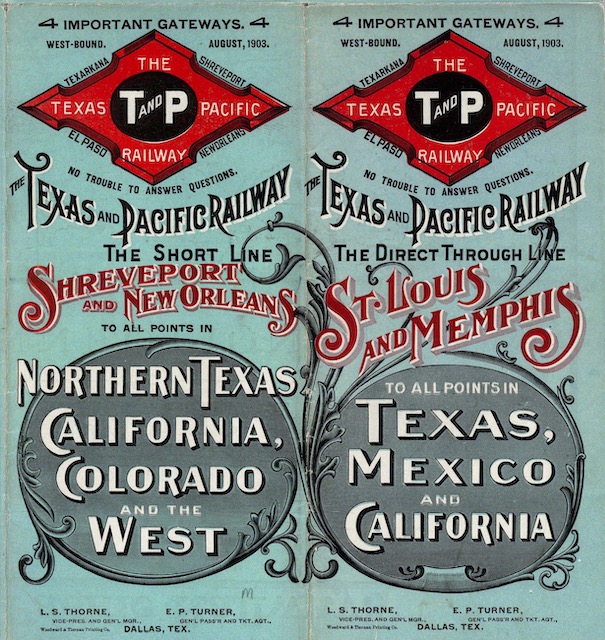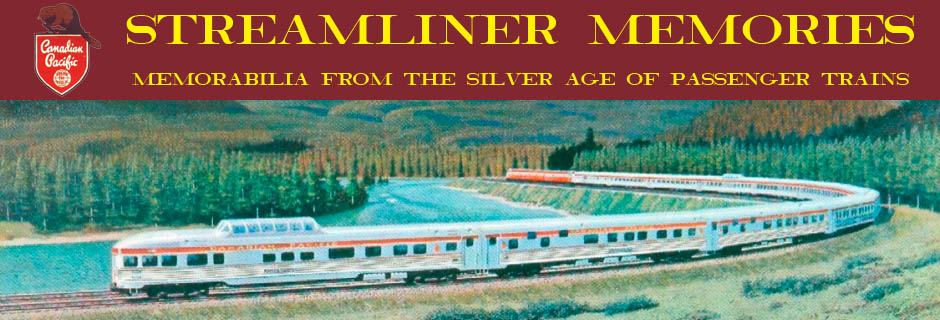Texas & Pacific, the cover of this timetable asserts, was the “short line” from “New Orleans to all points in northern Texas, California, Colorado & the West.” That seems to be true in terms of miles: the Southern Pacific route from New Orleans to El Paso (according to this 1892 timetable) was more than 1,200 miles long, while the T&P route was 1,162.
 Click image to download an 13.3-MB PDF of this timetable, which is from the David Rumsey map collection.
Click image to download an 13.3-MB PDF of this timetable, which is from the David Rumsey map collection.
The T&P gave up this advantage by not running through trains from New Orleans to El Paso, instead requiring a change of trains, with a three-hour layover, in Fort Worth. The result was the T&P’s time from New Orleans to El Paso was an hour longer than Southern Pacific’s local train and five hours longer than the newly introduced Sunset Express. Plus, T&P passengers going west of El Paso would have to change to a Southern Pacific train there anyway.
T&P’s bigger advantage was for people coming from or through St. Louis, as they could take partner Iron Mountain Route from St. Louis to Texarkana and a T&P train from there. But St. Louis travelers also had the option of taking a train to Kansas City, from which they could take the Santa Fe or another railroad to California.
The map on the back of this brochure echoes the cover, saying, “The true southern route to and from California is via El Paso and the Texas & Pacific Railway.” The map clearly shows several non-competing railroad lines, including the Rock Island and St. Paul Road. But the Santa Fe and Southern Pacific routes are shown in the thinnest of lines with no marking as to what railroads they represent.
The cover also says “West-Bound.” However, all but a few of the timetables — and certainly all the main ones — show both west- and east-bound schedules.
